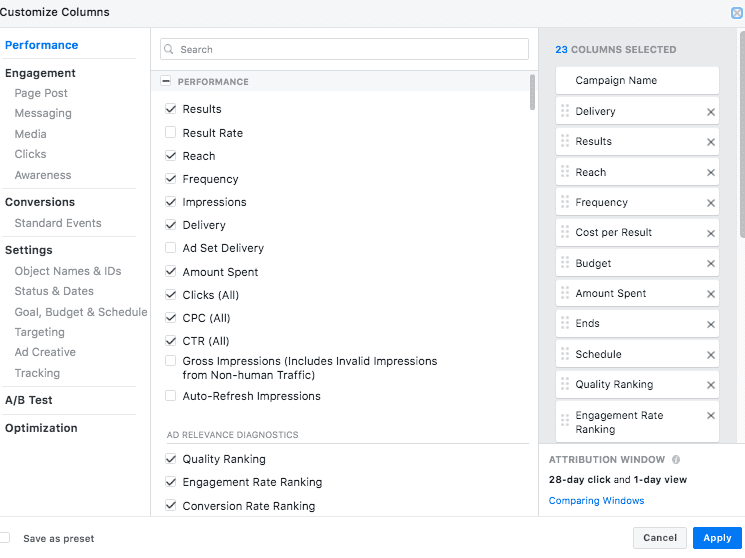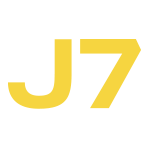Curious to know how to scale your Facebook Ads over $1,000/day? Get our experts' recommendations for free! All our clients went through this step!
Facebook ads performance report - 16 KPIs you should track to optimize your campaigns
The 16 KPIs you should be tracking for your Facebook Campaigns
The reason Facebook gives you so many options when creating your advertising campaign is to ensure that your ads perform as best as they can. Facebook has something to gain; if your advertising is popular with its users it means that it is of interest to them, and thus that the platform in itself is interesting.
The problem is that the key performance indicators (KPIs) are different for each objective suggested by Facebook. You therefore need to understand which KPIs best meet your expectations and give you an as accurate as possible analysis of your performance.
To do this, we’ll look at 4 very popular campaign objectives and the KPIs that we focus on as an agency specialized in Facebook advertising.
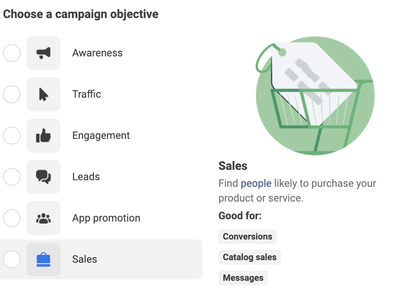
1 - STANDARD CAMPAIGN #1 : ENGAGEMENT
Category: Consideration
Objective: Get your audience to click, like, comment, share, view your ads or your content.
Why you should use it: Interactions lead to organic traffic i.e. unpaid. It’s an excellent way to make yourself known quickly, thanks to social proof.
Context:
Everyone has used this goal at least once in their lives, because that's what Facebook is known for: to give you "Likes", comments and shares. Whether it's a real campaign or a simple post on your page, the engagement objective is useful to increase awareness and get comments and “Likes” on your content. Remember that between a post with 0 interaction and another one with 150 "Likes" and 40 comments, your attention will automatically be focused on the second one.
For this example, let’s take an Image or Video ad with a short text (no “Learn More” button), with no link or button.
- Key Performance Indicators
Cost-Per-Engagement & Engagement
If you're paying for an objective you might as well know how much it costs to achieve. To give you an idea, we often aim for a cost-per-engagement of less than $1. Of course, each case is unique, but for the majority of our agency clients, that is the cost that we never exceed. However, there is one IMPORTANT point to consider.
If you’re using video format, then chances are that your cost-per-engagement will show as $0.01; that's normal. Facebook considers viewing your video (3 seconds minimum) to be an engagement action. However, it's not worth anything to you because you need "Likes" and exposure, so you'll have to look at the next KPI .
- Reactions, Comments & Shares
These KPIs can be viewed directly in the "Engagement” tab under Columns in your ad manager. There, you will be able to see all the "real engagement actions" on your ads. Establish a ratio between the number of actions and the reach of your ads. This will allow you, by testing different audiences, to know which one generates the most engagement and, therefore, which one is most interested in seeing your ads.
During a previous Live with Robin Vézina on the subject of engagement, we ranked the value of engagement actions on an ad as such:
- Long Comments
- Shares
- Short Comments
- Reactions (Likes)
- Link Clicks/Learn More
Know that your analysis must also focus directly on your advertising, and not just on the Facebook manager.
- Relevance Score
Another KPI that will also allow you to determine the quality of your advertising. The relevance score is a rating between 1 and 10 that tells you if your ad is of good quality or not. To do this calculation, Facebook relies on 3 things (and I quote):
- Ad Performance
- Positive Feedback (e.g., app installations, clicks, video views) of people who have seen your ad
- Negative Feedback (e.g.: when someone clicks "I don't want to see this" on your ad)
- Frequency
I’m warning you, this is a metric that we will mention frequently and that is not specific to the engagement objective.
Simply ask yourself the following question: do I need to see a post 3 times before I decide to leave a comment or a "Like"? No.
Make sure that your engagement ad does not exceed a frequency of 2 over a 7-day period.
2 - STANDARD CAMPAIGN #2 : REACH
Category: Awareness
Objective: Be seen
Why you should use it: Ad delivery is super fast and less expensive when using this objective as the action requested is not complicated (see the ads)
Context:
This is an objective that’s often used in retargeting, i.e. for an audience that knows us and to whom an offer was made, but not accepted, on the first try.
It can also be used on a cold audience, in a specific neighbourhood for example, to let them know that a new store has just opened up near them.
For this example, let’s take an Image or Video ad with a short text (no “Learn More” button), with no link or button.
Key Performance Indicators
Reach
When you selected your audience, Facebook gave you a size estimate for that audience. After one day of ad delivery, you'll be able to see how many people you've reached and therefore how many days and budget it will take to reach the entire audience.
It also is your first performance indicator, so if your reach has decreased from one day to the next it's because there's a problem with the ads.
Cost per 1,000…
In this case, we’ll look at 2 metrics:
- Cost per 1,000 impressions: how much does it cost for your ads to be displayed 1,000 times?
- Cost per 1,000 people reached: how much does it cost for 1,000 people to be exposed to your ads?
Indeed, reach (people exposed to your ads) is not the same as impression (ads displayed). One could consider that it takes several impressions before someone decides to pay attention to an ad.
I don't have a value scale to give you because it depends on your audience:
- If it’s retargeting (limited audience), your cost for both these metrics will be very high. Facebook will consider that reaching new people is difficult, but that’s due to the fact that you’re not allowing it to do so with your targeting.
- If it’s in acquisition (large audience), it should be lower ($3 to $10).
Frequency
Again, frequency comes into play.
How does one proceed to plant a message into someone’s mind? It must be repeated multiple times.
For a reach campaign, do not hesitate to remove the frequency cap so that the person sees your ads often.
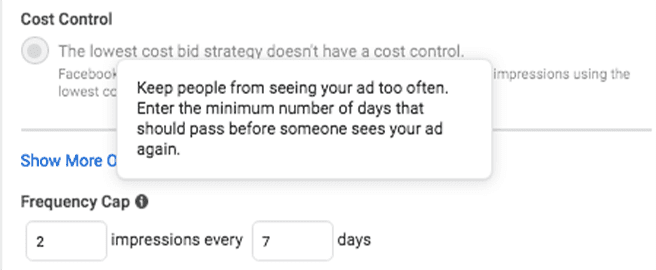
3 - INTERMEDIATE CAMPAIGN : TRAFFIC
Category: Consideration
Objective: Drive people off the news feed (or even off Facebook)
Why you should use it: It’s the best objective to get the most visitors on a website.
Context:
You’re reached a whole new level: you’re driving people off Facebook!
The main objective is acquisition. As an agency, we often use it to bring the prospect to a sales page, hoping that he will take action.
It’s a good method to use to find out if our offer is convincing enough, without having to run a conversion campaign.
For this example, let's take an Image or Video ad, with short or long text, with a button and a link.
Key Performance Indicators
All those KPIs can be found under the “Performance and Clicks” tab of your Columns.
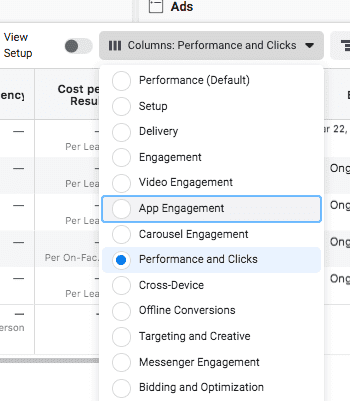
- Link Click-Through-Rate (Unique CTR)
Let's do a quick lesson on that KPI. The CTR (click-through-rate) is the ratio of your views and clicks.
As with the CPC, we will only look at link clicks.
In this case, I can give you a value scale. A Unique CTR lower than 1% is not good, it needs to be improved
You may have a higher Unique CTR on a retargeting audience; that’s normal, as it’s closer to converting to your offer than a cold acquisition audience.
- Frequency
A new appearance! Frequency can play a role in the performance of your traffic ad.
Let's assume that you can’t click on the ad (no time, bad connection, etc.).
We estimate that the 7-day ad delivery frequency can go over 2, but should not exceed 3 (you can test it for yourself).
Remember one thing; clicking on a link takes more effort than simply liking an ad. By clicking, you will be redirected to a new page and you will have to read some content.
It’s therefore understandable that one must be exposed to a certain message several times before taking action.
If you think that’s too much to initiate a click, then that means that your ad doesn't trigger enough urgency! It's up to you to make it happen.
4- ADVANCED CAMPAIGN : CONVERSION
Category: Conversion
Objective: Getting someone to perform a conversion action off-Facebook
Why you should use it: Optimize expenses to reach a specific objective on your website.
Context:
Ultimate level of advertising!
You have traffic on your website and you want it to take action on a certain offer (e.g.: purchase or contact form); our objective is still customer acquisition.
It should be used once we determine that our offer is attractive and sellable. The Ad Manager requires a minimum of 50 conversions within two weeks to be able to optimize. If it doesn’t get these results, you will not be taking full advantage of its algorithm.
For this example, let's take an Image or Video ad, with short or long text, with a button and link.
Key Performance Indicators
Cost per Result & Number of Conversions
Don’t lose sight of your objective!
I consider a conversion campaign to be quite an advanced objective, as it is not solely based on your advertising.
It also relies on your landing page and sales funnel to get that conversion. You may very well have a very strong Unique CTR for your ads, but a low number of conversions afterwards.
In that case, ask yourself the right questions:
- Are my arguments convincing?
- Is this the right offer to put forward?
- Does my site display properly on mobile (which represents 80% of Facebook traffic)?
- Is there a technical issue (bug) on the website that prevents the conversion from happening?
- Are there too many steps to take in order to complete the requested action?
There are a lot of elements to take into account depending on the complexity of your conversion.
Ads are not the only culprit if you’re getting poor results.
Unique CTR
For the same reasons as with the traffic campaign. You need to know if you’re getting clicks on your ads!
Frequency
Again, I consider that a frequency of 2 to 3 is not too much for a conversion campaign. But be careful not to exceed that number.
Conclusion
Although these are the KPIs that I use, there are other metrics to be taken into account such as your ad format (image or long video), the offer and the audience used in your campaign.
I would recommend that you think ahead and determine which KPIs are useful and necessary for your business.
Otherwise, you can see the complete list of KPIs in the "Customize Columns" tab. This will allow you to create your own campaign dashboard and save you some time when it comes to analyzing your results.
